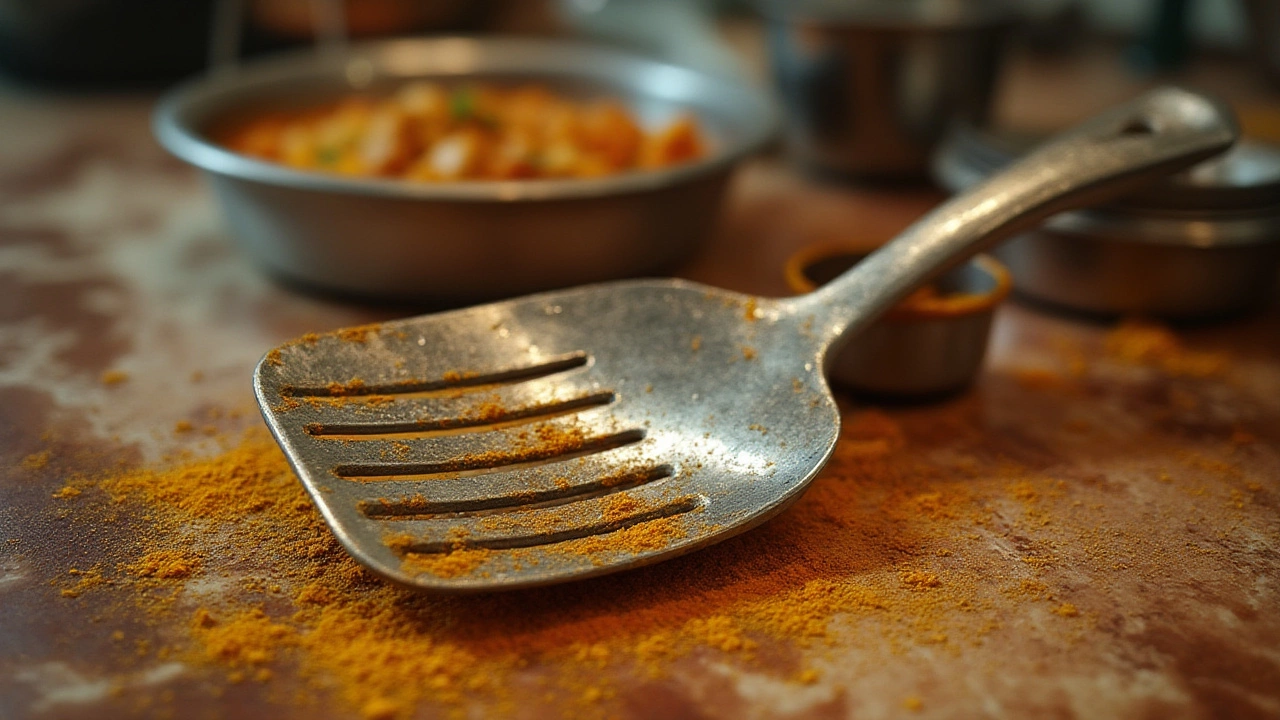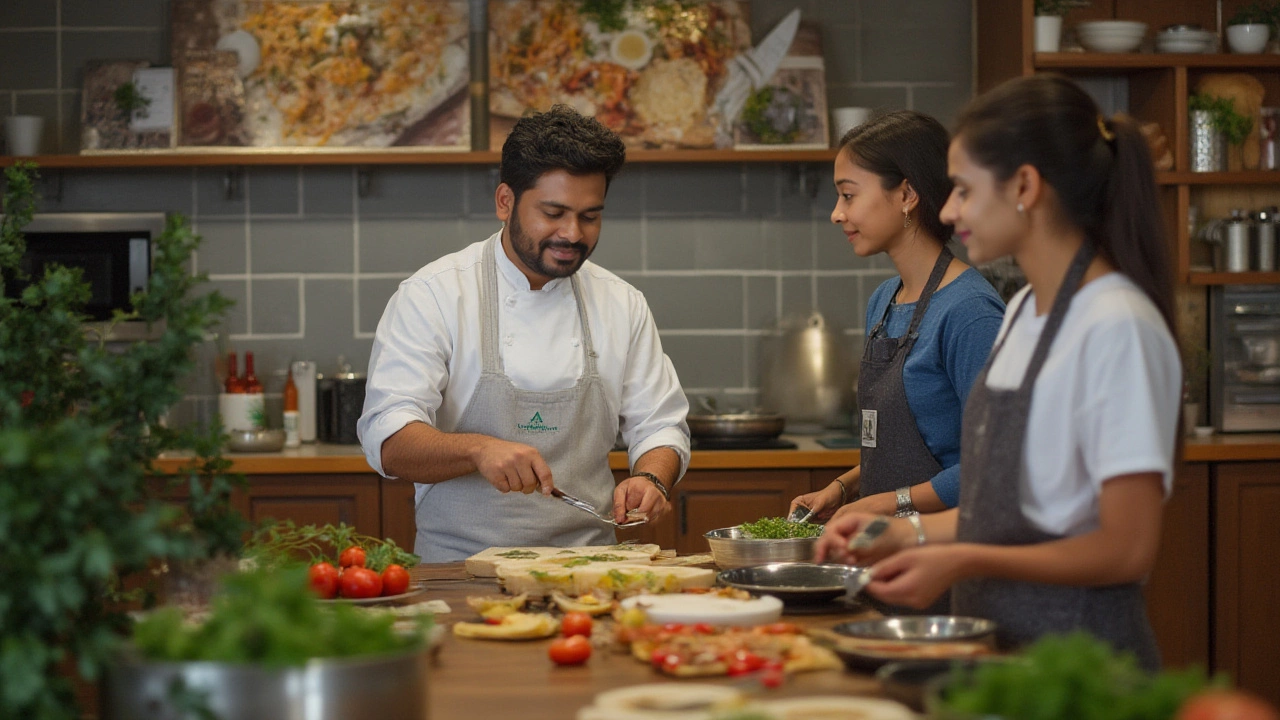Most Used Kitchen Utensil: Surprising Stats and Tips for Everyday Cooking

Ever thought about how one small kitchen tool gets more action than your pricey blender, your hefty iron skillet, or even the trendiest gadgets cluttering up the countertop? Picture your morning. You head to the kitchen, bleary-eyed, mind on coffee. You crack an egg—what do you reach for first? Your hand automatically grabs a familiar object. This isn’t just your routine; it’s a global habit. Among the drawers packed with gadgets and utensil holders crowded with choices, just one humble tool stands out as the true MVP of the kitchen.
Ready for a twist? It’s not the knife. Not even the snazzy silicone spatula. The most used utensil, time after time, is the trusty spoon. Surprised? Let’s dig into how one simple shape has become essential, how it quietly shapes your cooking habits, and why it’s so much more than just a way to stir your coffee. Kitchen spoons are literally the workhorses, pulling triple duty whether you’re whipping up pancakes or taste-testing soup straight from the pot.
The Spoon: Kitchen Champion
Spoons have a way of slipping into almost every kitchen task you can name. They’re old—like, really old. Historians date the oldest known spoons back thousands of years, even to ancient Egypt and China, made from wood, bone, or precious metals. Their shape is simple, sensible, and universal. Whether you’re ladling a stew, measuring sugar for your grandmother’s apple pie recipe, or scraping out the last bit of yogurt with a demure dessert spoon, you’re following in ancient footsteps.
This tool won out over the knife and the humble fork in a 2023 survey from the International Housewares Association. The data? Just over 78% of people said they reached for a spoon more often than any other kitchen tool—beating out knives (65%), forks (53%), and even spatulas (38%). That probably matches your own kitchen rhythm, right? Tea, oatmeal, stirring pasta sauce, tasting chili, feeding your toddler—that’s half your daily kitchen routine.
The reason behind its dominance comes down to pure utility. Spoons combine scooping, mixing, tasting, serving, and even a little light measuring, all in a single shape. Need to drizzle sauce? Grab a spoon. Stirring risotto so it turns creamy? Spoon. Fishing out a tea bag? Spoon. Rufus, my dog, even gets his peanut butter treat measured out with a spoon. There’s no high-tech magic here, just classic design that hasn’t really changed in centuries because it flat-out works.
Check out this comparison of common kitchen utensils, their use frequency, and typical tasks:
| Utensil | Use Frequency (Per Day) | Typical Tasks |
|---|---|---|
| Spoon | 8-12 | Stirring, tasting, serving, eating |
| Knife | 4-7 | Chopping, slicing, spreading |
| Fork | 3-6 | Eating, serving, mixing |
| Spatula | 2-4 | Flipping, mixing |
So, when people say the kitchen is the heart of the home, it’s probably the spoon that’s doing most of the heavy lifting. Whether you’re a college student living on ramen or a home cook tackling sourdough, spoons are just always there—no fuss, no drama.
Types of Kitchen Spoons and Their Roles
Now, not all spoons are created equal. Open almost any drawer and you’ll spot a rogue collection of shapes and sizes. There’s the solid spoon, essential for stirring sauces or caramelizing onions. (Ever noticed how a concave bowl scrapes up bits from the bottom of a pan better than any flat spatula?) Slotted spoons, with their holes or slots, make draining peas or retrieving poached eggs a breeze—no soggy mess. Then there’s the soup spoon, the tasting spoon, and the classic tablespoon and teaspoon duo essential for baking. Every shape, every bend in the handle, has a job.
There’s something practical about wooden spoons, especially if you cook often. Wooden spoons don’t scratch your pans, they don’t get hot, and they don’t melt (I learned that one the hard way with a rogue plastic one in the Bolognese). Stainless steel spoons hang tough, never stain, last forever, and are just heavy enough to feel substantial in your hand. Silicone spoons handle sticky stuff and high heat, and you can toss them in the dishwasher without a second thought.
Here’s a quick guide to make sense of your collection:
- Wooden Spoon: Gentle on cookware, perfect for thick doughs or sauces.
- Slotted Spoon: Ideal for lifting food from liquid without the mess.
- Soup Spoon: Broad and round for sipping broth or spooning up chunky stew.
- Tasting Spoon: Small, convenient, and easy to rinse between tasks.
- Measuring Spoons: Friends to your baking projects, from cinnamon to salt.
- Serving Spoon: Big enough to dish out potatoes or greens during dinner.
Learning the best use for each makes a difference. A quick pro tip—separate your tasting spoons from the rest. If you cook often, keep a stack handy, so you’re not constantly washing and reusing the same one. No one wants chili flavored by stale tastes of last week’s curry.

Why the Spoon Outshines Other Utensils
Ever tried making soup with a knife? Or eating ice cream with a fork? The spoon’s shape is the hidden hero. Its bowl holds both liquids and solids—milk, cereal, soup, stew, and the occasional late-night spoonful of peanut butter. Ever notice how good spoons have a weight and length that feel—what’s the word—balanced? There’s design genius here that’s mostly gone uncelebrated.
Some chefs swear by a particular material or style. Julia Child was famously fond of her wooden spoons, refusing to let anything else touch her saucepans. On the flip side, modern pros often go for sturdy stainless steel—something about that smooth feel and easy cleaning. Even travel and survival experts recommend a simple spoon for outdoor cooking. Lightweight, portable, and multi-tasking—no surprise it’s a scout camp staple.
If you’re a serious cook, spoons work for everything from folding in flour to plating sauces. If you rarely cook, they’re still your go-to for yogurt, cereal, or coffee. Kids use them. Pets eye them. Even techies get involved—the spoon emoji was added to the Unicode Standard in 2016 following a worldwide petition for more realistic food icons.
Think about it: the spoon links cultures and cuisines. Whether it’s rice in Asia, soup in France, beans in Mexico, or oatmeal in Scotland, the spoon’s everywhere. Even in rituals—the classic “silver spoon” at Christenings or the old “spoon race” game at parties—they show up over and over as part of daily life.
Tips for Choosing and Caring for Kitchen Spoons
It’s tempting to ignore utensils when shopping, but a couple of smart choices go a long way. Pick spoons by how they’ll be used. Got nonstick pans? You’ll want either wood or silicone—these won’t scrape up your precious coating. Make lots of pasta or soup? Get a deep, solid serving spoon. Bake often? Sturdy measuring spoons and a few dedicated tasting spoons will save your sanity.
Here are some pointers to keep your spoon collection at its best:
- Don’t leave wooden spoons soaking in water. They swell, split, and sometimes take on mysterious smells.
- Run stainless steel through the dishwasher with no worries. They’re practically indestructible.
- Replace any plastic spoon that shows cracks or scorch marks—they hold onto bacteria like crazy.
- Periodically oil wooden spoons with food-grade mineral oil. Keeps them from drying out and cracking.
- Silicone spoons are great for sticky batters or high heat, and they rinse clean with soapy water or a dishwasher cycle.
For the gadget-lovers, there are smart spoons now that measure as you scoop or even connect to apps for recipes. Most people, though, stick to the classic styles. And honestly? Sometimes simpler is just better.
If you end up with too many, keep a separate stash for parties or as backup tasting spoons. Or upcycle old wooden spoons into plant markers for your herb garden—keeps things full circle in the kitchen, right?

Fun Spoon Facts and Kitchen Chatter
When you hit the thrift store or roam a flea market, antique spoons pop up everywhere. Collectors seek out commemorative or “souvenir” spoons—they’ve been a thing since the 1800s. Fun fact: The world’s largest spoon, located in Minneapolis, sits atop a giant cherry in a famous sculpture park. It’s nearly 52 feet long and weighs over 6,000 pounds. Now that’s a spoon you can’t lose in the back of a drawer.
Cafés in Italy often serve tiny espresso spoons to make that shot of coffee feel ceremonial. In Japan, soup spoons are wide and flat at the tip, perfect for scooping noodles. In India, spoons are often replaced by hands, but when used, they’re usually lightweight stainless steel made for sharing from communal platters. The spoon’s the ultimate team player—quiet yet always useful. Even astronauts eat with specialized spoons because zero gravity demands smart design.
Eating soup with my dog Rufus at my feet, I’m regularly reminded why spoons matter. They just work—simple, reliable, and always there. They’re the first things kids use, and the last thing anyone’s learned to set down at the table. Every chipped or stained old spoon in the drawer probably has a story that matches up with your favorite meals or moments at home.
So next time you find yourself reaching for that familiar tool, maybe you’ll pause for just a second—give it a little respect. It’s been making your meals happen, quietly and efficiently, long before you noticed. In the kitchen’s daily chaos, that’s a win worth remembering.